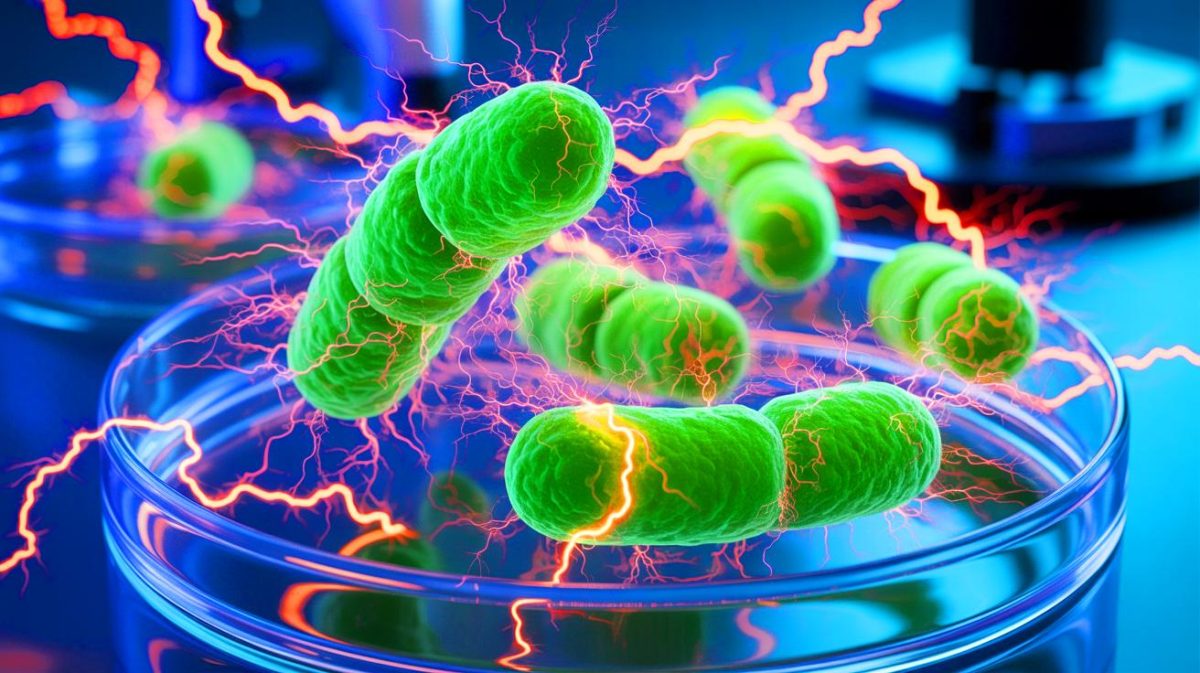| IN A NUTSHELL |
|
Recent discoveries in the field of bacteria electrochemistry are paving the way for groundbreaking advancements in energy technology. By utilizing bacteria that can “breathe” by producing electricity, scientists are exploring new avenues for sustainable energy solutions. This revolutionary approach could transform how we produce and manage energy, offering a cleaner and more efficient alternative to traditional methods. As these tiny organisms reveal their hidden potential, the future of energy innovation looks bright and promising, with implications that could reach far beyond our current understanding.
Bacteria’s Electrochemistry Could Lead to Energy Innovations
The latest findings in bacteria’s electrochemistry are expected to lead to modern energy innovations. Researchers emphasize that while most modern organisms rely on oxygen to metabolize food and release energy, bacteria have evolved unique mechanisms to thrive in oxygen-poor environments. These ancient organisms have developed the ability to expel electrons externally, allowing them to survive in places such as deep-sea vents and the human gut.
This process, known as extracellular respiration, allows bacteria to discharge electric current similarly to how batteries operate. By utilizing naturally occurring compounds like naphthoquinones, bacteria can transfer electrons to external surfaces, enabling them to generate energy without relying on oxygen. This discovery not only offers insights into bacterial life but also provides a new perspective on developing clean energy technologies that mimic these natural processes.
Diverse Microbes Utilize Redox Shuttles to Exchange Electrons
Published in the journal Cell, the study uncovers that diverse microbes use redox shuttles to facilitate electron exchange with their environment through mediated extracellular electron transfer (EET). This mechanism supports anaerobic survival and has been explored for bioelectrocatalysis, yet questions remain about its role in cellular bioenergetics.
Research integrating genome editing, electrochemistry, and systems biology has shed light on E. coli’s elusive respiration process. The study highlights how naphthoquinones function like molecular couriers, enabling bacteria to sustain themselves by discharging electrons externally. By advancing our understanding of these mechanisms, scientists are opening new possibilities for biotechnological applications that harness these natural processes for energy production.
Bacteria Could Sustain Themselves by Discharging Electrons Externally
Simulations and laboratory tests have shown that bacteria can sustain themselves by discharging electrons externally when placed on conductive materials. This ability to “breathe” through surfaces underscores the potential for utilizing bacteria in innovative ways, such as improving wastewater treatment and biomanufacturing.
By managing electron imbalances more effectively, bacteria could enhance the efficiency of these systems. The research lays the groundwork for harnessing carbon dioxide through renewable electricity, with bacteria functioning similarly to plants during photosynthesis. Such developments could lead to smarter, more sustainable technologies that integrate biological solutions at their core.
Harnessing the Power of Electricity-Spitting Bacteria
The potential of electricity-spitting bacteria is immense, offering a new frontier for sustainable energy solutions. By mimicking natural processes, scientists hope to create technologies that are both efficient and environmentally friendly. This approach not only addresses the energy challenges of today but also paves the way for a future where biology plays a central role in technology development.
As researchers continue to explore the capabilities of these remarkable organisms, the future of energy innovation looks promising. By harnessing the power of bacteria, we can move towards a cleaner, more sustainable world, where energy production and consumption align with nature’s rhythms.
As the potential of bacteria in energy innovations becomes increasingly apparent, the question remains: How will we integrate these biological processes into our existing energy infrastructure to create a sustainable future?
Did you like it? 4.5/5 (26)







Wow, des bactéries qui “crachent” de l’électricité! Ça ressemble à de la science-fiction! 😲
Est-ce que ces bactéries pourraient un jour remplacer les énergies fossiles?
J’espère que cette découverte sera rapidement mise en pratique pour améliorer le traitement des eaux usées.
Bravo aux scientifiques pour cette incroyable découverte! 🌟
Je suis un peu sceptique sur l’application réelle de cela à grande échelle. 🤨
Les bactéries auront-elles besoin d’un environnement spécifique pour produire de l’électricité?